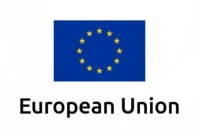Lolland and friends, or holidays in Denmark
The waters of the Baltic Sea cover numerous islands - both large and tiny, also uninhabited. Ignoring man-made boundaries, the waves blissfully break off the shores of different countries. Several of these islands belong to Denmark, and you can say something interesting about each of them. It is worth remembering that this beautiful country of all islands has over 440.
A holiday on a Danish island - which one should you choose?
When planning a vacation in Denmark in terms of active recreation, it is worth considering a trip to the Danish islands. However, it does not necessarily have to be Amager or Zealand, where Copenhagen is located. Nor does it have to be Bornholm, where you can visit sights, windsurf, ride horses, rock climbing, and admire butterflies in the large tropical butterfly park greenhouse on the outskirts of Nexø. An ideal place for a vacation can be, for example, the third largest Danish island, Lolland , connected by a motorway tunnel and bridges to another - Falster . Both attract golfers. They tempt with six beautifully situated courses, moreover, one, 18-hole course, also has the neighboring island, Møn. The main attraction of the latter, however, is not the golf course, but the limestone cliff, Møns Klint, which along with the other cliff, Stevns Klint (Zealand), is on the UNESCO World Heritage List. Those for whom a vacation without exploring the traces of the past is not a vacation, will be satisfied with a stay in this part of Denmark - a lot of sightseeing awaits them, including a walk around Halskov Vænge on Falster Island, a unique opportunity to see the oldest and at the same time the best preserved chamber graves in Denmark.
Lolland - home of many Poles
Large estates predominate on the island of Lolland, the remnants of a time when the local nobility was considered not only by the inhabitants, but also by the king himself. Unlike Lolland, its neighbor, Falster, was parceled out in the 18th century, and the property was sold to landowners and serfs. At the turn of the nineteenth and twentieth centuries, the largest concentration of Danish Polonia was created on Lolland - so large that in the then Denmark, laws were created especially for them (Polakloven). The newcomers from Poland visited the island en masse, coming for seasonal work. We can find out about it while visiting Sakskøbing , where there is a monument to Polish women working in the sugar beet field. Looking at the landscape of the island, it is immediately obvious that, apart from fishing, agriculture is the mainstay of the economy. The flat surface of Lolland is covered with hectares of arable fields, interspersed here and there with small forest areas. Approx. 60 km of the south coast was strengthened with a system of dams, protecting the island from inundations. Colonies of summer houses grew above the dams, in stretches with nice beaches. Holidaymakers who would like to spend more time relaxing on the Danish sand will probably head south-east of Falster, where some of the most beautiful beaches in this part of the country are located. There is also a very attractive place for tourists - the Gedser Odde headland , the southernmost point of Denmark. From it you can admire not only the sea, but also the migrations of birds, including soft feathers that visit the headland already at the end of March, or white gulls, numerous in the rocky coast in spring and autumn.
Camping on Lolland
If you are looking for accommodation on Lolland , and one of the main criteria is an attractive offer for families with children, the choice will be easy. Hummingen Camping , open from April to October, is waiting for both small and large guests . a swimming pool with slides, a paddling pool for toddlers under 3 and, of course, playgrounds. It is a great place to rest, and also to allow children to have closer contact with pets (goats and donkeys live here). The campground is family-run, giving it a warm, intimate atmosphere. You can feel at ease - just like at home.
A writer by profession, a passion of a cat. One day he will see what is behind the Urals - good to Vladivostok. So far, when he can, he enjoys the sun of the countries of southern Europe. And it's also fun;)
